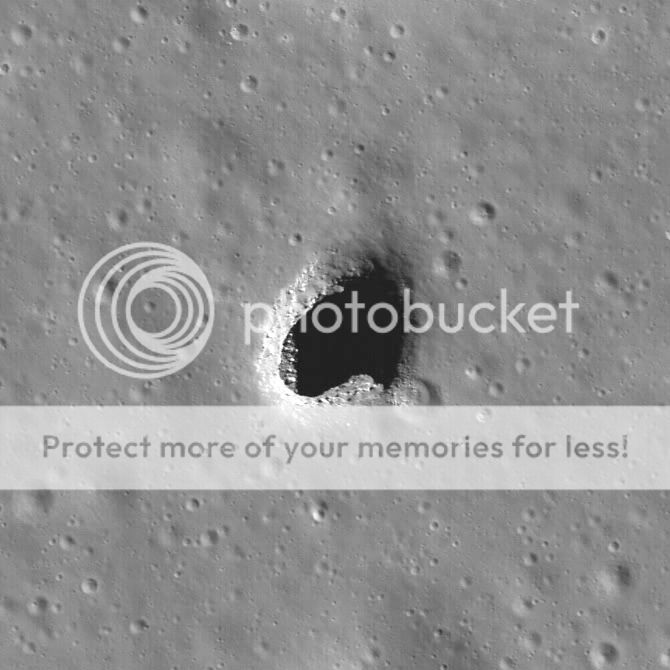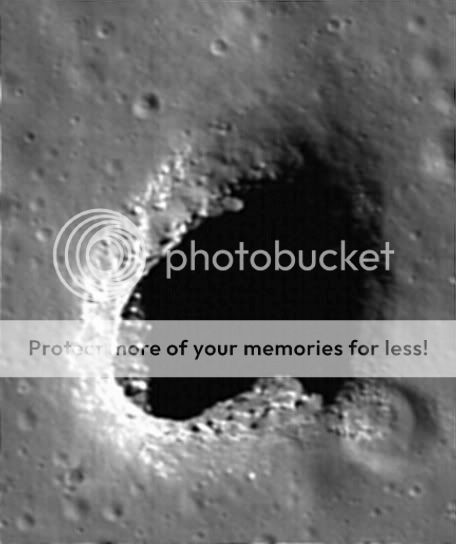S
silylene
Guest
You may recall the thread about "What you would like to explore", and I suggested my priority would be exploration of the mysterious lunar lava pits and tunnels:
http://www.space.com/common/forums/viewtopic.php?f=12&t=22130&p=420675&hilit=moon+cave#p420675
Well today SDC has a nice article on this subject:
http://www.space.com/scienceastrono...SPACE.com+Headline+Feed)&utm_content=My+Yahoo
And in this article, it proposes exactly what I advocated on 20 Jan 2010, for all the same reasons:
"Tantalizing chambers
Researchers speculate that the tunnels, if unclogged, could serve as passages and livable lunar lairs for humans.
"The tunnels offer a perfect radiation shield and a very benign thermal environment," Robinson said in a statement. "Once you get down to 2 meters under the surface of the moon, the temperature remains fairly constant, probably around -30 to -40 degrees C."
Explorers would be sheltered from daily temperatures that swing from 212 degrees Fahrenheit (100 degrees Celsius) during midday to minus 238 degrees Fahrenheit (minus 150 degrees Celsius) at night, as well as from possible asteroids. But further exploration would be needed before the tubes could be used.
"Hold off on booking your next vacation at the Lunar Carlsbad Hilton," said Paul Spudis of the NASA-funded Lunar and Planetary Institute in Texas. "Many tunnels may have filled up with their own solidified lava."
Viewed though entrances, the blackness of the enormous pits for now remains a tantalizing wall.
"We just can't tell, with our remote instruments, what the skylights lead to," said Spudis. "To find out for sure, we'd need to go to the moon and do some spelunking."
Relaying how a lava flow mapping expedition in Hawaii revealed a surprising system of vents similar to the skylights photographed, Spudis left open the possibility of a lunar labyrinth.
"It turned out that there was a whole new cave system that was not evident from aerial photos ... Who knows? The moon continually surprises me," he said. "
What do you think? How would you design this mission?
http://www.space.com/common/forums/viewtopic.php?f=12&t=22130&p=420675&hilit=moon+cave#p420675
An unmanned lunar rover to the recently discovered hole which was punched into the roof of an apparent lava tube, and this rover would be able to lower on a wire an assembly containing a camera/light/sampler/water tester . I'd love to see what's in a lunar cave system!
This mission is technically doable today with the boosters we have, and would be low cost.
I'd also like to point out that this cave is in perpetual darkness, should be very cold, and might contain deposits of ice. The sidewalls of the tunnel might be layered, and teach us much about the history of this maria.

Well today SDC has a nice article on this subject:
http://www.space.com/scienceastrono...SPACE.com+Headline+Feed)&utm_content=My+Yahoo
And in this article, it proposes exactly what I advocated on 20 Jan 2010, for all the same reasons:
"Tantalizing chambers
Researchers speculate that the tunnels, if unclogged, could serve as passages and livable lunar lairs for humans.
"The tunnels offer a perfect radiation shield and a very benign thermal environment," Robinson said in a statement. "Once you get down to 2 meters under the surface of the moon, the temperature remains fairly constant, probably around -30 to -40 degrees C."
Explorers would be sheltered from daily temperatures that swing from 212 degrees Fahrenheit (100 degrees Celsius) during midday to minus 238 degrees Fahrenheit (minus 150 degrees Celsius) at night, as well as from possible asteroids. But further exploration would be needed before the tubes could be used.
"Hold off on booking your next vacation at the Lunar Carlsbad Hilton," said Paul Spudis of the NASA-funded Lunar and Planetary Institute in Texas. "Many tunnels may have filled up with their own solidified lava."
Viewed though entrances, the blackness of the enormous pits for now remains a tantalizing wall.
"We just can't tell, with our remote instruments, what the skylights lead to," said Spudis. "To find out for sure, we'd need to go to the moon and do some spelunking."
Relaying how a lava flow mapping expedition in Hawaii revealed a surprising system of vents similar to the skylights photographed, Spudis left open the possibility of a lunar labyrinth.
"It turned out that there was a whole new cave system that was not evident from aerial photos ... Who knows? The moon continually surprises me," he said. "
What do you think? How would you design this mission?




